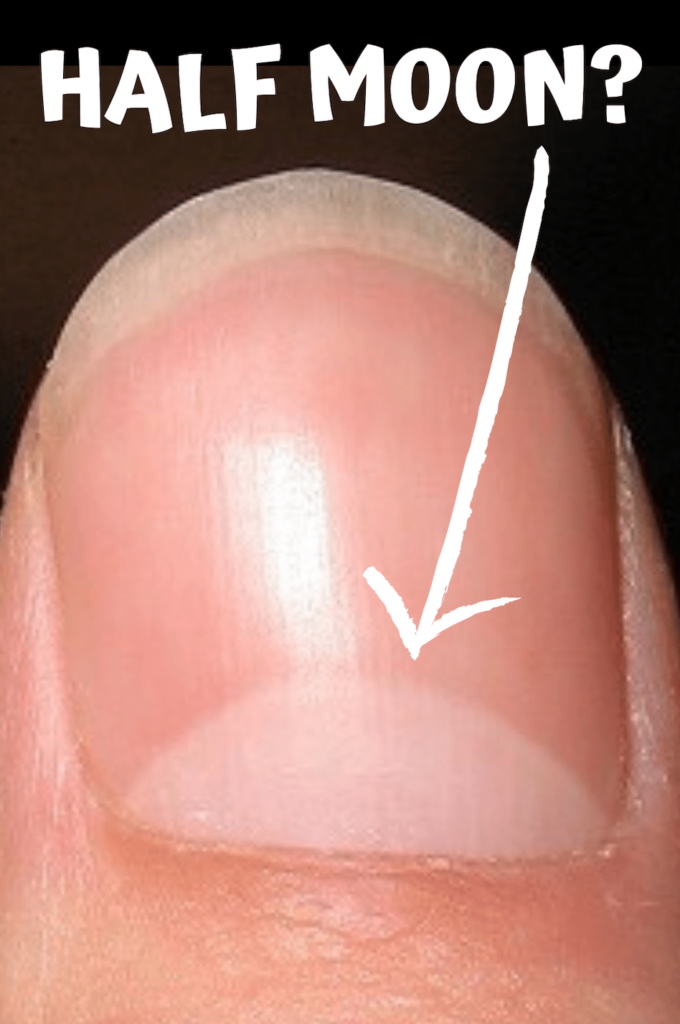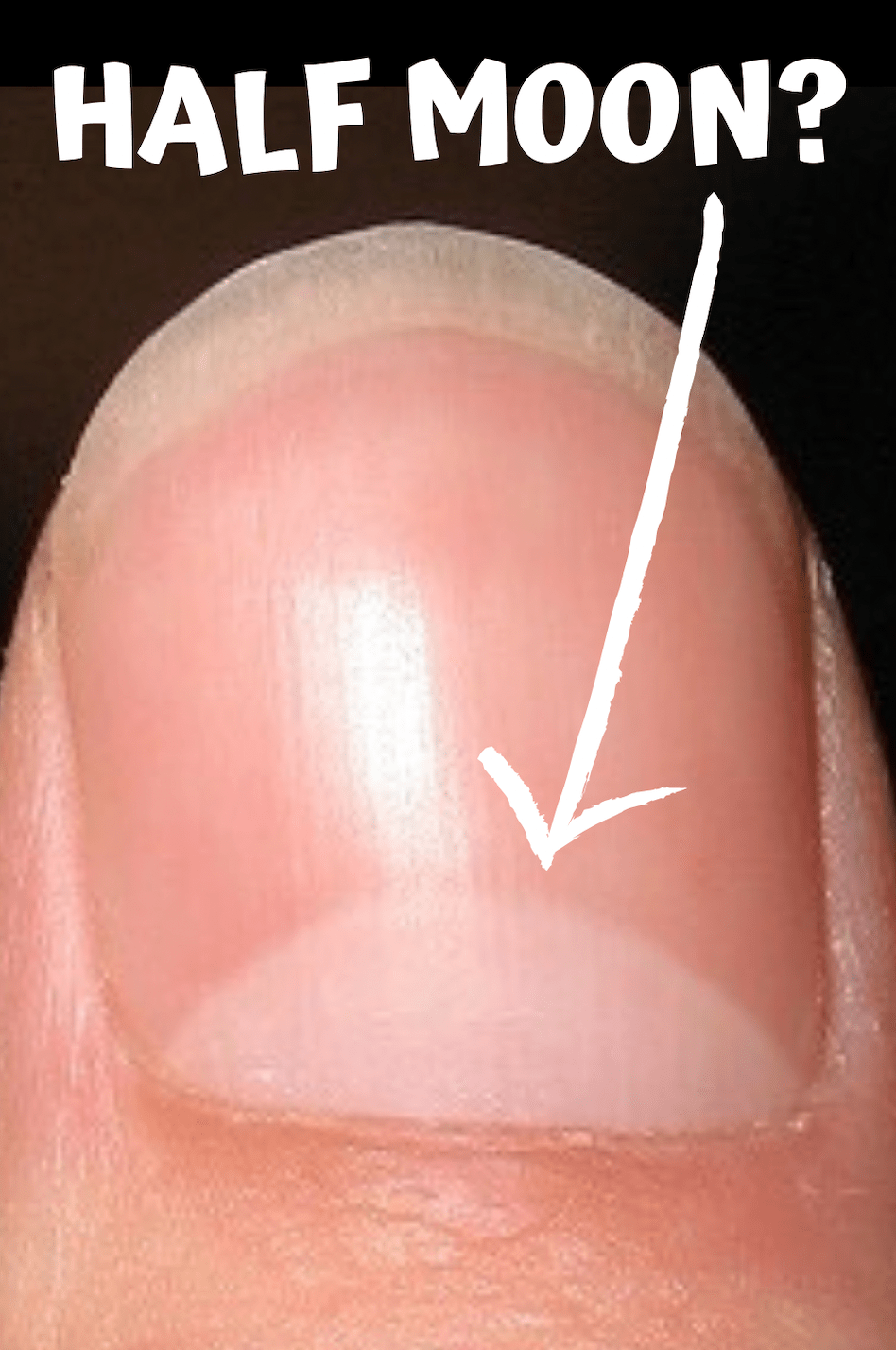Most people don’t associate sickness with fingernails, but they really should. Your fingernails may provide important health cues or indicate the existence of a dangerous illness.
Examine your nails in detail. Examine each one while keeping your hand a foot or so away from your face and level with your nose.
Look at the ridges, grooves, dips, and curves. Check to see if your nails are damaged or chipped, and how thick or thin they are. Note the color of the skin under the nail, the skin around the nail, and the nail itself.

Attempt to remember if this is how your nails have always appeared. Keep track of any new developments because fingernail changes and the onset of disease are connected. Compare what you observe with this new perspective and the following list of eight potential fingernail health warnings.
- Nails with stains
Pink fingernails with a hint of pinkish white (moons) towards the base are indicative of good health. You may have a major undiagnosed health issue if your nails are smeared with other colors or have a lackluster tone.
-Green nails indicate the presence of germs
Red streaks in the nail bed are an indication of a heart valve infection. Blueish nails indicate low blood oxygen levels. Dull nails indicate vitamin insufficiency. White nails could be a sign of a liver condition like hepatitis.
-Age and congestive heart failure are linked to Terry’s nails’ dark streaks at the top.
Clean up those nails, and pay close attention to the color of your nails! You want to make certain that you understand what your fingers are saying given the “rainbow” of potential health issues.
- Heavy nails
Natural nails are not thick. You want strong nails, but if they more closely resemble talons or claws than regular nails, be careful!
-Otherwise normal thickened nails may be a symptom of lung illness.
-Thick, coarse nails may be a sign of a fungus infection.
Thyroid disease or psoriasis may be indicated by thick, separated nails. A circulatory issue may also be indicated by unusual thickness.
Your nails becoming thicker is a change that should alert you to other health issues you might be disregarding. Additionally, be aware of allergic reactions to new drugs, which might manifest as unexpectedly thick nails.
- Broken nails
Not only are split nails occasionally chipped or closed in doors. These nails instead appear to peel off in layers. Don’t put everything down to frequent hand washing or nail paint, especially because:
-Deficiencies in folic acid, vitamin C, and protein cause split nails.
Split nails may indicate psoriasis, which begins in the nails 10% of the time, according to WebMD. Split nails may also be a sign of chronic malnutrition.
To fight back and focus more on your general health, watch what you eat and look into the psoriasis connection.
- Sponge-shaped nails
Spoon fingernails are a sign of several internal problems. The nails must be soft, curved upward, and large enough to make a dip to hold water in order to be deemed full spoons. Spoon nails indicate: -Iron insufficiency, typically brought on by anemia
Heart disease, hyperthyroidism, and hemachromatosis, a liver ailment in which the body absorbs excessive amounts of iron
Health issues and problems with your fingernails sometimes go hand in hand; for many people, getting their health under control also causes their spoon nails to return to normal.
- Nails with pits
Small dips or holes in your nails may be the consequence of pounding your hands together, or they may indicate that you need to examine your health more carefully. Pitting in the nails could mean:
-Connective tissue disorder -Psoriasis -Alopecia areata, an autoimmune condition that results in hair loss
-Zinc insufficiency, which manifests as a pit that appears to create a line in the centre of your nail.
Watch your hand to distinguish between genuine, long-lasting pits and natural dents and dings. The first will disappear rapidly, while disease-related pits persist.
Ridges 6.
Smooth surfaces with barely discernible lines are ideal for nails. An indication that something is wrong with your body are obvious ridge lines. The following are some of the most typical circumstances linked to dense ridge lines:
-Lupus (for red streaks at the base of your nails) -Iron deficiency -Inflammatory arthritis
Instead of simply buffing away your ridges, heed their caution!
- Brittle, dry nails
Lotion and cuticle oil are not necessary. Check your hormone levels and bacterial health if your nails are dry and brittle.
According to the American Academy of Dermatology, 12% of Americans have fungus that causes their nails to become dry or even crumbly. Thyroid disease causes brittle, dry fingernails that break and split easily.
You won’t see a difference in the appearance of your fingernails for a whole growth cycle because treating thyroid and fungal conditions takes time.
- hammered nails
Your hands are termed to be “clubbed” if you have full skin that appears to bulge around the nail or if your nails appear to have puffed up around your fingers. Clubbed nails may indicate: -Lung disease, particularly if you already have breathing problems
-Irritable bowel syndrome
-AIDS -Liver illness
Although they won’t be the sole indications of these illnesses, your fingernails may help you decide whether or not to seek medical attention.
Do not disregard the health cues that your hands are sending you. Check your nails frequently to safeguard your health because fingernails and illness are more closely associated than you might imagine.





